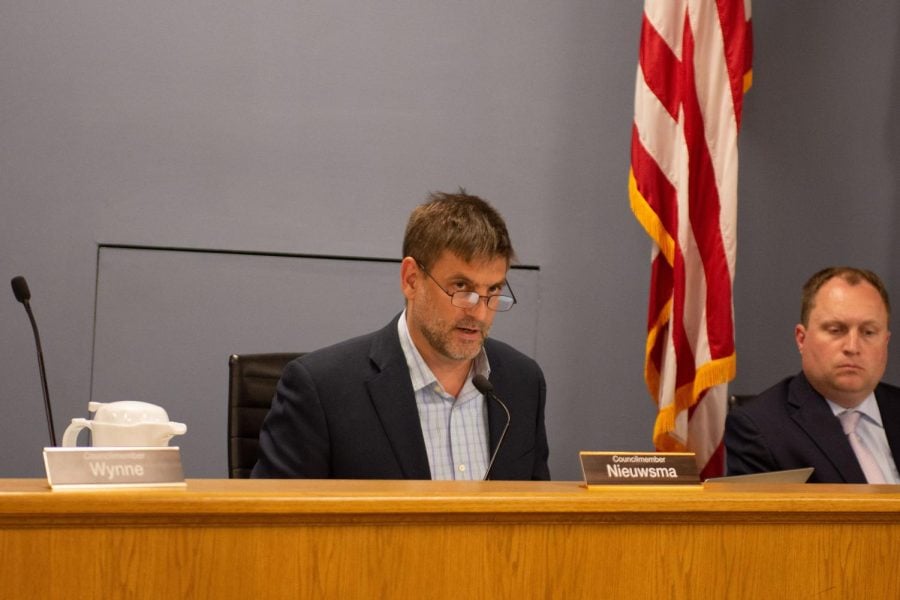Profs head initiative to make NU more accessible for community college transfer students
Daily file photo by Joanne Haner
A new initiative on campus aims to ease the transfer process for community college students.
February 25, 2022
Medill junior Nick Song wanted to be a journalist fresh out of high school.
He decided to take a year off after graduating to experiment with radio and podcasting professionally. After his gap year, he enrolled in a local community college program before transferring to Northwestern last year.
“NU was the only journalism program I applied to,” Song said. “(Reporters I talked to) all said if I wanted to go to j-school, Northwestern was the place to go … Understanding how widespread Medill travels, it carries a lot of clout. There’s always going to be a Medill person in any newsroom you’d go to.”
Even then, Song said transferring came with a few bumps in the road.
A new initiative, headed by sociology Prof. Monica Prasad, is working to address the difficulties community college students face when transferring to NU. The initiative aims to make the University more transparent about credit transferring and more accessible to community college transfers.
Prasad said there are many reasons why NU should expand its community college transfer population. She said private institutions shouldn’t be reserved for the wealthy because they provide better aid and smaller class sizes, among other perks.
As politicians discuss free two-year community college, Prasad said it’s in NU’s best interest to start solidifying its community college transfer process. She said these students are going through the process alone.
“Right now, we put the burden of making organizations speak to each other on the shoulders of the students, so these are often disadvantaged students who are required to navigate this intensely complex bureaucracy on their own,” Prasad said. “We want to try to do things that make it a little bit easier for them to navigate.”
NU does not release specific information on its community college student admission rate. Prasad said 10 students typically transfer from community colleges each year, although more may be accepted, a number she said is too low.
Prasad said she looked at ACT scores and grades from one local community college to see how many students qualified for NU.
“We looked just at people whose ACT scores were at the 75th percentile of NU students. There were about 20 students who met those criteria every year,” Prasad said. “So if you think about it, if that’s true for the other colleges, that’s a pool of several hundred community college students who are competitive.”
While NU accepts more than 10 community college transfers each year, Prasad said one of the top issues deterring them from choosing NU is the credit transfer process. NU doesn’t show which credits carry over between schools before potential students commit, sparking fears in potential transfers that their previous work will not count toward a degree.
Song attended Santa Monica College in Los Angeles. His former college partook in the Intersegmental General Education Transfer Curriculum, a program that allows students to take classes from community colleges and transfer them to the University of California school system.
The curriculum helps students satisfy their freshman and sophomore year general education requirements before they transfer into a UC school. Because NU is a private institution, Song said credit transferring has been more difficult, but he will still be able to graduate in four years.
“There were some hiccups, like not everything transferred as smoothly as I hoped for,” Song said. “That’s pretty common for most new college students, even those who went (to) community college within Illinois, just because NU is beholden to their own thing.”
Apart from credits not transferring smoothly, transfer students don’t have a lot of access to information about NU and the admissions process in general, according to political science and sociology Prof. Jean Clipperton, who is part of the initiative.
Clipperton teaches Sociology 288: Institutions and Society, where students learn about different types of institutions and try to develop solutions. This year, her class is focusing on tackling the community college transfers problem.
One group of students suggested NU develop a set of transfer pathways called “cat tracks” to show potential students the ways they could ultimately attend NU. She said student ideas like these are important for the initiative to function well.
“If one of the issues is that students aren’t thinking seriously about coming to NU, it seems logical that you would have some students work on that side of the problem,” Clipperton said. “They’re much closer to the age in time when you would be thinking about these things and they have a different perspective.”
Prasad said she has also received feedback from community college students who feel NU’s privileged culture deters them. While the effort is to get students in the door, she said the initiative needs to expand to making transfer students feel more welcomed.
Song said some people at NU believe community college is only for those who failed out of high school or cannot afford a four-year program. However, he said these stereotypes are misleading.
If his community college had as many resources as NU, Song said he would’ve happily attended for four years. He added attending community college made him more grateful for the opportunities he has at NU.
“It’s great that people view college in this transitory rite-of-passage way, but … I went through a lot to get to this point. It’s left me with this appreciation for being here,” Song said.
Email: [email protected]
Twitter: @joannah_11
Related Stories:
— #AndTransfers: Everything you need to know about transferring to Northwestern
— Northwestern’s acceptance rate falls to 6.8 percent, lowest in University history
— Mounting applications, undervalued qualifications: A look into NU’s most selective admissions cycle












